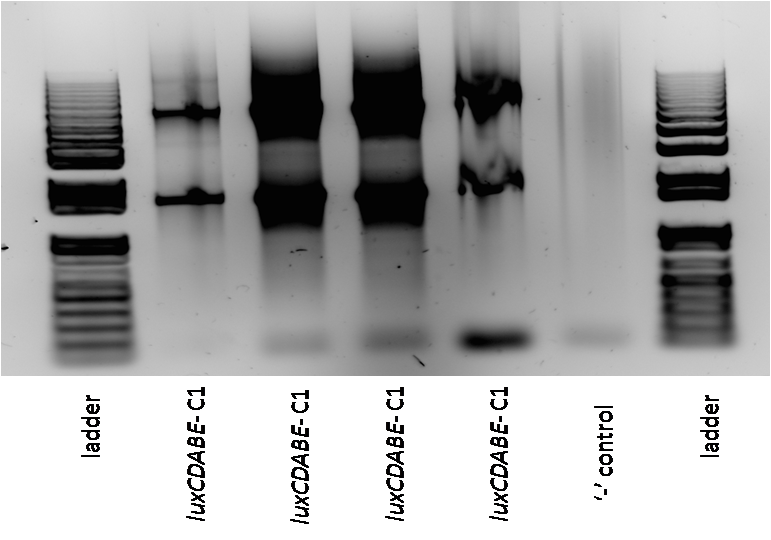Team:Calgary/21 May 2009
From 2009.igem.org

|
CAROL
Verification of amplification of luxCDABE from polymerase chain reaction (PCR)
|
|
EMILY
Visualization of PCR Product
File:2009 05 21Pqrr4 LuxOD47E.jpeg
|
|
FAHD
WHMIS TRAINING and First Sponsorship May 21st 2009
We had our WHMIS training today at the University of Calgary Main Campus. It is a required course to take if we are working in a lab. In the afternoon, I was greeted with some great news: NEB (New England BioLabs) Canada had agreed to sponsor us with lab equipment and reagents. It was our first ever sponsorship. It was also an exciting moment for our entire team as it would save us loads and loads of money because our WetLab team uses a lot of reagents from NEB Canada.
|
|
JEREMY
Continuation of Training in the Labs
This afternoon our lab team members ran a gel from yesterday's PCR. We learned how to prepare agarose gels, load gels and visualize them in the G-Box. The gel that we collectively ran did have a clean negative control; however, we definitely overloaded DNA into the wells of the gel. We learned what to expect when loading gels, and that sometimes you may not even get any bands on the gel. I'm quite excited to break off into our respective mini-projects and start practicing and performing all these lab techniques.
|
|
KATIE
Planning PCR Activity
Started to make an outline of what I will be required to do for PCR machine:
|
|
KEVIN
WHMIS traning
The whole morning was spent learning about safety.
Logo
In the afternoon, we brainstormed about our team logo.
|
|
MANDY
General Team Affairs
Today, most of the team had WHMIS training on main campus. The afternoon was spent brainstorming potential ideas for an iGEM Calgary team logo (and possibly mascot). Ideas were bounced around in order to prepare some prototypes for a future logo meeting.
|
|
PATRICK
Early Development
Retrospective Notebook: This entry was not written on this day, but derived later from working notes I made that day.
First came up with the polymer linking system that I would eventually use without too much modification: each piece of DNA knows the name of the next piece in the polymer. Figuring out what to use as that 'name', and how to store it, would be a much longer process. I noticed very quickly that the internal identifier assigned by SL to each object changed every time the object was copied from the user's inventory, so would not be suitable for tracking polymer structure over time. Began to notice how important a consistent scheme for inter-object communication would be. Ultimately, the objects that make up the Biobrick simulator would send something like 70 distinct message types, a number which is only set to increase. In the case of the HUD, there would be more than a hundred possible destination objects! Decided that as a first working goal, I would try to implement the TetR operon, something that as of this writing (August 20 2009) I have not yet fully completed!
|
|
PRIMA
Marketing
We had the WHMIS training on main campus all morning (9:00am - 12:00 noon).
In the afternoon, I continued my follow-ups with companies via email. Jeremy, Vicki and I wrote up Thank You letters to the Dragons from Dragon's Den for taking the time out of their busy schedules to watch our marketing pitches, provide feedback, advising us on marketing and business initiatives and way to sell our project. I researched a few more companies that I had found, wrote up emails and updated the Gmail marketing document.
|
 "
"











